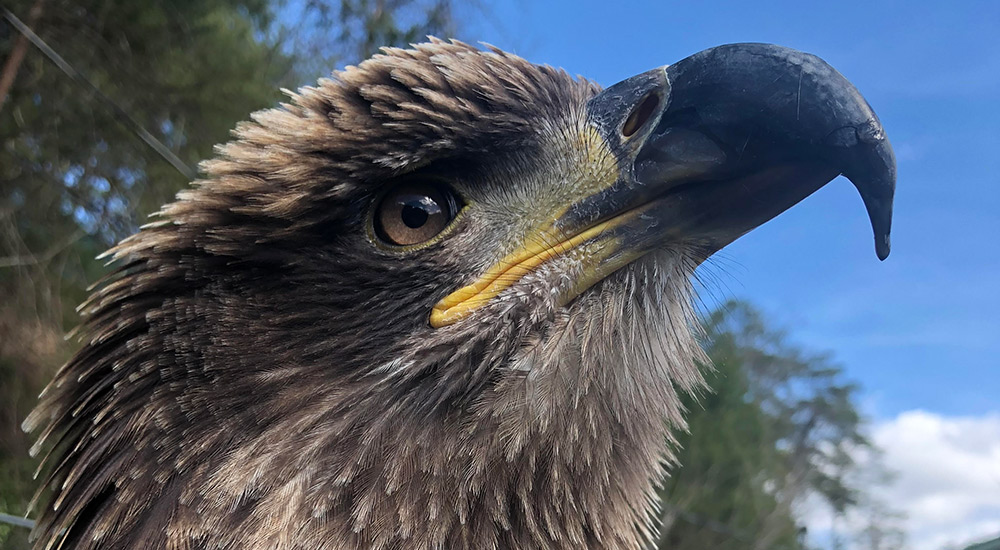SAPHIRA
Species: Haliaeetus leucocephalus, Bald Eagle • Hatched: May 9, 2017 • Sex: Female • Disability: Inability to hunt
Saphira was hatched at AEF on May 9, 2017. She was released from our hack tower on August 17 and traveled to Virginia where she was found in September of the same year, emaciated and malnourished. She was transferred to a rehabilitation center in VA and then back to American Eagle Foundation where she was placed in an aviary with live prey and fish. Saphira showed no interest in hunting for herself and was ultimately deemed non-releasable. She now resides permanently at AEF as an educational ambassador.
Saphira is one of our largest glove-trained eagles, weighing about 10lbs with an approximately 7ft wingspan. Her size and bold personality inspired her name, which she shares with the fictional dragon from the book/movie series, Eragon. She is a very curious bird and loves to interact with new enrichment items! She is an excellent educational ambassador and you may see her accompanying AEF staff at off-site educational events!
ABOUT THIS SPECIES
Bald Eagles were placed at the center of the Great Seal of the United States in 1782! Since then, they have served as the pride of America’s skies and the symbol of all that America stands for.
Bald Eagles obviously aren’t bald! “Bald” in this sense refers to an Middle English word that means “white headed.” When eagles fledge the nest at between 10 and 13 weeks of age, they are primarily all brown. An Eagle gets its full white head and tail feathers and yellow beak and eyes at around four to five years of age.
Bald Eagles typically mate for life. Usually, they will only look for a new mate if their faithful companion dies, but sometimes a new mate is chosen in a territorial fight over a nest.
In building a nest, Bald Eagles will choose a ‘super-canopy’ tree—one rising above the rest— near to water, with sturdy limbs and a commanding view of the surrounding terrain. Typical nest heights are 50-125 feet high. They make use of twigs, grasses, soft mosses and feathers in making their nests and normally return to the same nest each year during breeding season and add new materials to it. A new eagle pair’s nest usually measures about five feet in width and two feet in depth. As they add to it year after year, however, it can reach widths of over ten feet and weigh up to a ton or more. On the Channel Islands, where large trees are very scarce, Bald Eagles have built their nests on cliffs; and, in some coastal areas of Alaska and Canada where there are few tall trees, Bald Eagles will nest on the ground, using whatever materials are available.

